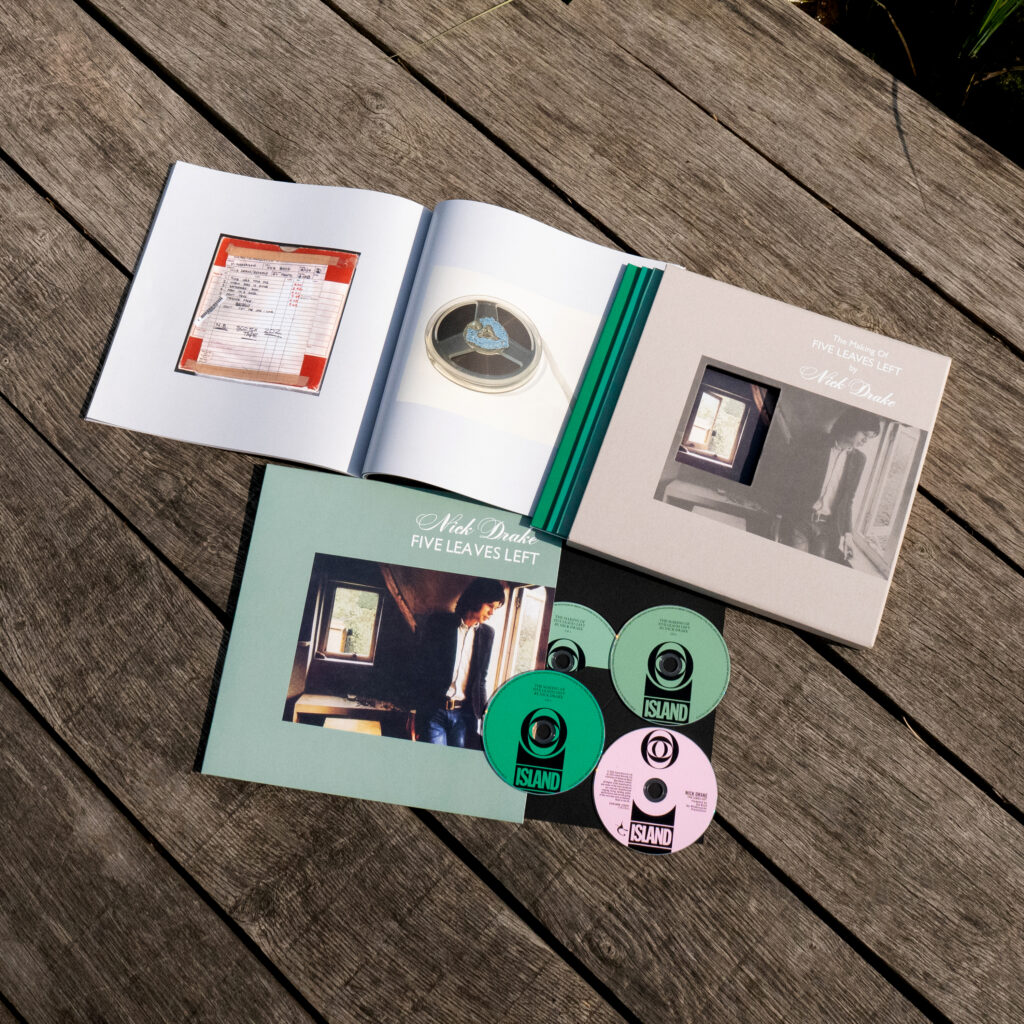

Reviewers, including this one, have often yielded to the temptation to compare some of today’s artists to folk singer and songwriter Nick Drake, because you can hear his influence in their work. But the truth is, there’s no one quite like him.
Drake’s music does hint at his own influences, such as Bert Jansch, the Incredible String Band, John Renbourn, Donovan, and Fairport Convention. But his albums, with their moody strings, impressionistic lyrics, and delicate baritone vocals, are in a class of their own.
“There was something rather magical about [Drake’s songs], almost otherworldly,” said Island Records founder Chris Blackwell. And, said Drake producer Joe Boyd, recalling his first exposure to a three-song demo: “I was stunned. Nick was just completely different. This wasn’t like anything else.” Fellow recording artist Robert Kirby reacted similarly: “I was completely knocked out…I had never heard anything like it up until then and I’ve never heard anything like it since.”
Despite these reactions, and some critical raves at the time of their release, Drake’s three studio albums all flopped when they first appeared between 1969 and 1972. Moreover, he remained little known for years after his 1974 death at age 26 from an overdose of antidepressants. One reason may be that, like Love’s Arthur Lee, he failed to tour in support of his records or to grant interviews. Another might be that he was simply ahead of his time.
Drake’s music began to attract a little attention in the 1980s. Then, in 1999, his record sales started to take off—thanks, interestingly enough, considering that he didn’t exactly pursue a commercial sound, to Volkswagen’s use of his song “Pink Moon” in a TV ad.
Drake’s studio LPs have since been augmented by CDs containing a smattering of demos, outtakes, and live tracks, but until today, his discography has remained as small as it has been impressive. Now, however, his list of recordings has been expanded significantly. That’s thanks to a new box set that chronicles the development of his debut album, which arrived in stores in July 1969, a few weeks after his 21st birthday.
Called The Making of Five Leaves Left and available with your choice of four CDs or vinyl LPs, the package offers a fascinating look at Drake’s creative process. The 32 tracks on the first three discs include performances from his first-ever session at London’s Sound Techniques studios and from a demo recording made in a dorm room at the University of Cambridge, where he was a student. Most of the material was unearthed in recent years and has not been previously issued, and several of the songs have not been available in any version until now. A fourth disc contains a 2000 remaster of the 10-track original album. (The record was remastered again in 2013 for a vinyl release, but the earlier remaster is deemed superior.)
The box comes with an oversized 60-page softcover book that includes numerous photos, lyrics to all the songs, and copious discographic information. It features a long and revealing essay about Drake’s life in the years leading up to the making of Five Leaves Left, as well as the recording sessions that produced it.
While some of the demo versions in this box are similar to and nearly as polished as what Drake delivered on Five Leaves Left, you’ll find revelatory variations scattered throughout the discs. An early version of “’Cello Song” (called “Strange Face”), for example, is slower and gentler than the final recording and redolent of Donovan’s earliest work.
Also here are a largely instrumental reading of “Time Has Told Me,” two stripped-down renditions of “River Man,” and four performances of “Day Is Done” that show it evolving from rudimentary folk into the intricate, strings-enhanced number that Drake apparently had in mind from the beginning. (“It’s sort of a string quartet song,” he says before playing it at Cambridge.) And then there are the selections that have not been previously released in any form, such as a lovely if embryonic reading of a song called “My Love Left with the Rain” and the poppy “Mickey’s Tune,” whose title might refer to Drake’s friend and sometime accompanist, Micky Astor.
Let’s hope we’ll soon see similar boxes devoted to the making of Drake’s other two studio albums, both of which are as noteworthy as his debut. The world needs all the music from him that it can get.
A Must-hear Live Set from Eric Andersen


Like Nick Drake, Eric Andersen is an immensely important folk singer whose affecting music is unlike anything you’ll find elsewhere. Unlike Drake, however, Andersen has had the good fortune to endure and remain productive for decades.
Now 82 and still making great records, such as the recent Dance of Love and Death, he began performing in 1964 and released his first LP the following year. His sophomore album, which came out in 1966, contained no fewer than three enduring classics: “Violets of Dawn,” “Thirsty Boots,” and “Close the Door Lightly.” Since then, he has issued dozens more memorable studio and live albums.
Among them is 1972’s Blue River, Andersen’s eighth LP, which is widely and justifiably regarded as a classic of the genre. Recorded in Nashville, it finds the singer supported by some of that town’s best studio musicians, such as Kenny Buttrey and Norbert Putnam, as well as David Bromberg, Joni Mitchell, and many others. The program delivers eight self-penned introspective and often wistful songs about life and romantic love, plus an excellent cover of singer/songwriter David Whiffen’s “More Often Than Not.”
In 2012, 40 years after that record’s release, Andersen gave the concert featured on the newly issued Blue River Live in Tokyo. It contains readings of all nine songs on the 1972 studio LP, plus five additional tracks: the aforementioned “Violets of Dawn” and “Thirsty Boots”; “Moonchild River Song” and “Woman She Was Gentle,” both from 1975’s essential Be True to You; and “Lie with Me,” which Andersen recorded in the early 1970s and which finally surfaced on 1991’s Stages: The Lost Album.
It’s a must-hear set—even better than the original Blue River. Andersen, who plays guitar, piano, and harmonica, is in fine voice. And while the long list of players on the 1972 album did excellent work there, these sensual and intimate songs seem even stronger in the arrangements in this set, which feature accompaniment only from violinist Michele Gazich and Andersen’s wife, Inge, who provides harmony vocals.


AloJapan.com